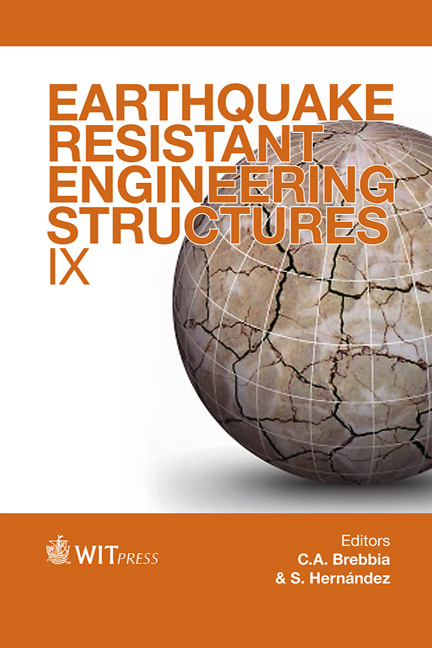Reducing Seismic Stress On Buildings Through Inertia Limiters At Floor Level
Price
Free (open access)
Transaction
Volume
132
Pages
12
Page Range
333 - 344
Published
2013
Size
530 kb
Paper DOI
10.2495/ERES130271
Copyright
WIT Press
Author(s)
M. C. Porcu
Abstract
A seismic stress control method based on the disconnection of non-structural floor masses during strong earthquakes is investigated in the present paper. Rigid-plastic devices (very stiff in the elastic range, in practice), which may plastically yield when a pre-set level of seismic load is reached, are assumed to connect structural and non-structural floor masses. Such rigid-plastic connectors act as inertia limiters so reducing seismic loads on building floors. In addition, they also act as seismic energy dissipaters due to plastic dissipation which is triggered at the connector level. The method may lead to significant seismic stress reductions. The price to be paid, however, might be large relative displacements of the disconnected mass. By referring to a single-storey frame and to recorded ground motions, a numerical investigation is performed in the present paper showing that the disconnected mass usually experiences rather small relative displacements (generally below 10 cm), even when high stress reductions are achieved. For practical purposes, a useful procedure to obtain a quick – though approximate – evaluation of the peak relative displacement of the disconnected mass from the earthquake rigid-plastic pseudo-spectrum is also provided in the paper. Keywords: seismic stress control, rigid-plastic connectors, floor mass disconnection, inertia limiters.
Keywords
seismic stress control, rigid-plastic connectors, floor mass disconnection, inertia limiters





